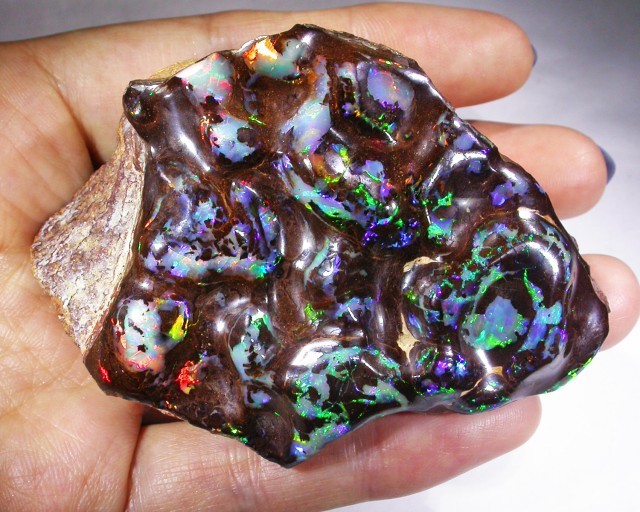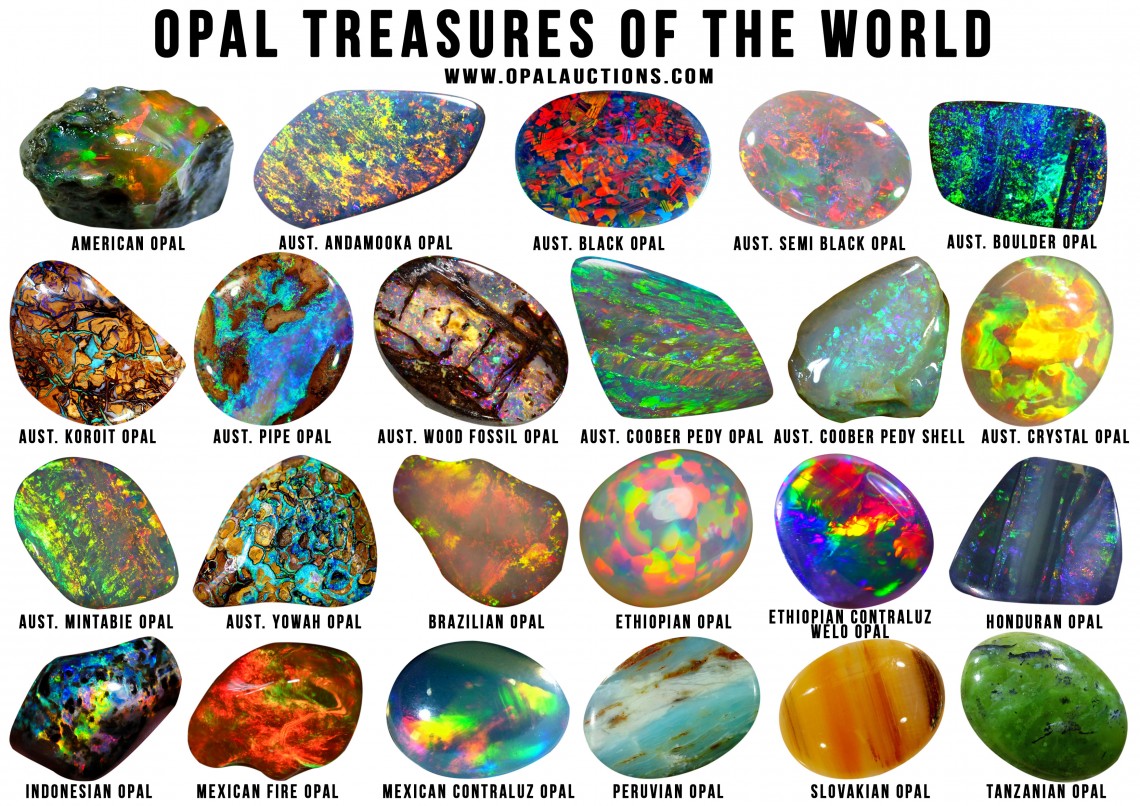
In truth, most common opal does not have a pearly luster, even when it is polished. The common definition given for opalescence is "the pearly luster of common opal". Some people believe that "opalescence" and "play-of-color" are the same, which is not true. The video near the top of this page illustrates the beautiful "play-of-color" in an Ethiopian Welo opal. If you examine a specimen of precious opal under bright light, play-of-color can be observed in three situations: 1) when the stone is moved, 2) when the light source is moved, or, 3) when the angle of observation is changed. If the play-of-color is of high quality and large enough to cut, the material can be used to produce valuable gemstones. The rare specimens of opal that exhibit a play-of-color are known as " precious opal". It is often assumed to be quartz or a variety of chalcedony - but a surprising amount of common opal exists. Most common opal has an unremarkable appearance and is almost invariably overlooked in the field. Some people use the name "potch" for this type of opal. Most opal is " common opal" or opal that lacks the colorful flashes known as "play-of-color". Opal is a very common material, found throughout the world. Together, these properties enable it to be a gemstone, albeit a fragile one. This phenomenon is known as "play-of-color". Some opal also has an internal structure that consists of regularly packed spheres, which enables it to behave like a diffraction grating and separate light into its component colors - similar to what is done by a prism. Opal also has water, which reduces its specific gravity, gives it a lower hardness, and makes it much more brittle. Low specific gravity and hardness.Ĭommonly used as a gem and as an ornamental stone.Īlthough opal has a composition that includes SiO 2, its physical properties are very different from quartz. Translucent, opaque, semi-transparent, and, rarely, transparent.Ģ.0 to 2.2, varying with impurities, which include various amounts of waterĬonchoidal fracture. Rough opal can have a dull, pearly, waxy, or vitreous luster. The play-of-color of precious opal displays spectral colors of red, orange, yellow, green, blue, and violet. Some of the most beautiful common opals are red, orange, pink, green,or blue. Therefore opal is a " mineraloid" rather than a " mineral."Ĭommonly having a bodycolor of white, yellow, gray, black, or brown however, the bodycolor of opal can be any color.

It is amorphous, without a crystalline structure, and without a definite chemical composition (it contains a variable amount of water, as shown by the "n" in its chemical composition). Mineralogically, opal is a hydrous silicon dioxide with a chemical composition of SiO 2. It can be surprisingly beautiful! Common Opal has color, pattern and beauty that can be anything but common. If you are just starting to learn about opal, here are three varieties that might surprise you: Fire Opal is known for its intense red, orange and yellow colors - the colors of a fire! Boulder Opal is opal with attached host rock. There are many types of opal found in deposits around the world. The best opals command prices per carat that rival expensive diamonds, rubies, sapphires, and emeralds.

A nice precious opal can flash every color of the spectrum with an intensity and quality of color that surpasses the fire of diamond.

Opal is one of the world's most popular gemstones and the birthstone for the month of October.

VIDEO: The Life of an Opal: Justin at shows you the journey of an opal, from mine to workshop to finished gem.


 0 kommentar(er)
0 kommentar(er)
